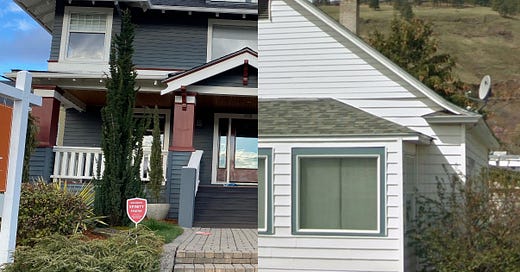Secretary of State Shemia Fagan’s audit of the mortgage interest deduction (MID) may reignite a debate about one of Oregon’s most irrational tax breaks, but it will clash with one of taxpayers’ most deeply held beliefs—and myths promoted by the real estate industry.
The introduction to the 34-page audit, released March 11, reads like a political attack. But the report’s explanation that spending through the tax code is the same as spending through the regular budget—and that both reflect our values—is a citizen’s primer. Then there are the numbers. The top 1% of taxpayers get the same aggregate benefit as the bottom 40%. The fifth of the population with incomes greater than $100,000 get three-fifths of the MID’s total expenditure.
In short, the MID is a subsidy for the wealthy. That should close the case for a state whose statutory tax policy, in ORS 316.003, is equity: “The tax system should be equitable where the minimum aspects of a fair system are: (A) That it shields genuine subsistence income from taxation; (B) That it is not regressive; and (C) That it imposes approximately the same tax burden on all households earning the same income.”
But voters think the MID is a birthright. It’s been in Oregon’s tax code for a century. Never mind that few “middle class” taxpayers receive it. Or that in 2017 Congress effectively denied the federal MID to the middle class: According to IRS data, the share of return filers claiming it fell from 22% in 2017 to 9% in 2019.
In 2021, when the legislature considered House and Senate bills denying the subsidy for second homes and to (married) taxpayers with adjusted gross incomes (AGI) greater than $250,000, the Oregon Association of Realtors ginned up opposition to “alteration or elimination of the [MID] for owners of multiple homes, and implementation of means testing.” But 19 of 21 realtors who submitted testimony supported the reform. Agent Chris Bonner wrote, “We have a housing crisis of epic proportions, and every dollar given away to folks who don't need it is a dollar we can’t spend on solving it.” The public record—148 commenters—was overwhelmingly in favor.
Neither bill made it to the floor.
Those favoring repeal of the MID, which will cost the state $1.1 billion in the current biennium, have educating to do. They also have facts. Here are four.
The benefit is small, and fewer than a third of tax filers claim it.
The audit reports that for the fourth quintile of taxpayers—those with AGI of $57,000 to $100,00 whom we will generously dub the “middle class”—the average MID benefit for those who claim it is $658, or $55/month. (For the top 1%, the monthly benefit is $141.) Business Insider, drawing on census data, estimated that the Oregonians’ median monthly mortgage payment was $1,750. Assuming a $50-a-month tax benefit is about the middle, then that’s less than 3% of a mortgage payment. And in 2018, according to state statistics, of 1.8 million Oregon tax returns, 587,000 taxpayers claimed interest deductions.
Interest expense is not taxable—but the MID is not about housing.
Suppose you buy a home and borrow a half-million dollars at 4% for 30 years. You'll pay $95,000 in interest over the loan’s first five years. At the marginal income tax rate of 8.75% (which starts for married filers at $18,101), your Oregon MID translates to a tax reduction of about $8,350 over five years, or $139/month. Suppose I buy the house next door, same price, and borrow $250,000 on the same terms. I'll get half the tax cut you get, even though we bought houses at the same price. Because the MID is not about housing, it's a subsidy for debt.
The MID tilts to high-end homes in Oregon’s richest neighborhoods.
In the split photo above, assume the Portland house on the left just sold for $937,500 and the one on the right, in La Grande, for $250,000. The buyers, both married filers, take out 80% mortgages on the terms noted above. Over five years the Portland homeowners’ MID tax gift would be $261 a month in the 8.75% bracket ($295 in the 9.9% bracket). The La Grande couple’s average MID would be worth $56 a month. (The standard deduction is worth $34 monthly.)
The MID distorts markets and shifts benefits away from homeowners.
As buyers, we focus not on the mortgage balance but on our household budget: how much house we can afford. With the MID, we can afford more. The result, economists understand, is higher prices across the market. Who gets the tax benefit? Developers, who build more expensive homes. Realtors, whose fee is a percentage of the sale price. Financiers, who take their cuts. And sellers—except we buy another house, at a cost greater than it would otherwise be.
As a tax policy wonk in the nation’s capital, I was engaged in this nerdy conversation for decades. Even after Congress (mostly) took it away, the MID is still with us in Oregon, so I’m no Pollyanna. But with work, the latest exposure of its inequity could encourage legislators to stop this Robin Hood in reverse.
Bennett Minton is a member of Tax Fairness Oregon, a network of volunteers who advocate for a rational and equitable tax code.




